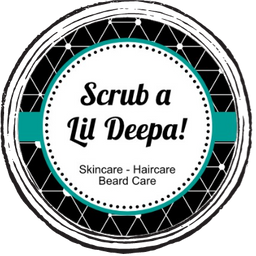Understanding Exfoliants in Skincare
Exfoliation is a **key step in skincare**, helping to **remove dead skin cells, unclog pores, and promote a smoother, more radiant complexion**. It enhances product absorption and helps with issues like **uneven texture, dullness, and congestion**.
At Scrub a Lil Deepa, we prioritize **gentle, natural exfoliants** that respect the skin’s **barrier and hydration balance** while effectively renewing the skin’s surface. Whether it's sugar softening with humectants or finely milled powders that polish without micro-tears, our exfoliants are designed for a **balanced, effective cleanse.**
| Exfoliant | Exfoliation Type | Texture & Size | Best For | Additional Benefits |
|---|---|---|---|---|
| Sugar | Physical | Fine to medium granules | All skin types, sensitive skin | Softens in humectants, helps retain moisture |
| Brown Sugar | Physical | Soft, dissolves quickly | Dry, delicate, or aging skin | Mild exfoliation, rich in glycolic acid |
| Oatmeal | Physical & Soothing | Finely ground, soft | Dry, sensitive, or eczema-prone skin | Hydrates, soothes irritation |
| Walnut Shell Powder | Physical | Medium-coarse | Normal to oily skin | Natural source of vitamin E, deep exfoliation |
| Coffee Grounds | Physical | Medium granules | Dull, tired skin, cellulite-prone areas | Stimulates circulation, firms skin |
🌿 Different Types of Exfoliation
Exfoliation can be classified into **three main types**, each offering unique benefits based on your skin type and concerns.
💧 **Physical Exfoliation**
Uses **granules or textured ingredients** to manually remove dead skin cells.
- 🌿 **Sugar** – Dissolves over time, making it gentler.
- ☕ **Coffee Grounds** – Provides a firmer scrub, great for body exfoliation.
- 🌰 **Walnut Shell** – Coarser but effective for deeper exfoliation.
🍍 **Enzymatic Exfoliation**
Uses **fruit enzymes** to dissolve dead skin without scrubbing.
- 🍍 **Papaya & Pineapple** – Naturally contain **papain and bromelain**, which break down proteins.
- 🍏 **Pumpkin Enzymes** – Rich in natural AHAs and vitamins.
🧪 **Chemical Exfoliation** (Not in Our Line, but Worth Knowing)
Uses **acids like AHAs and BHAs** to dissolve dead skin and increase cell turnover.
- 🍋 **Glycolic Acid** – Found in sugar, but chemically refined for deeper penetration.
- 🌿 **Salicylic Acid** – Naturally found in **willow bark**, great for acne-prone skin.
🔬 Understanding Particle Size & Exfoliation Strength
The **size and shape of an exfoliant** determine how **gentle or aggressive** it will be on the skin. Larger, rougher particles **exfoliate more deeply** but can be **too harsh for delicate skin**, while finer powders offer a **polishing effect.**
📏 Size Comparison of Common Exfoliants
- **Fine & Gentle** – Oatmeal, Brown Sugar, Finely Ground Walnut Shell
- **Medium & Balanced** – Sugar, Coffee Grounds
- **Coarse & Deep** – Raw Sugar, Larger Walnut Shell Powder
💡 The Magic of Sugar & Humectants
One of the **most unique properties of sugar** is how it **softens in humectants like honey and glycerin**, making it a **dynamic exfoliant**. Unlike traditional scrubs that stay rough throughout use, sugar begins as a moderate exfoliant and **melts into a conditioning treatment**, leaving skin soft and hydrated.
| Synthetic Exfoliant | Exfoliation Type | Common Use | Why We Don't Use It |
|---|---|---|---|
| Plastic Microbeads | Physical | Drugstore face scrubs | Environmental hazard, too abrasive |
| Silica Beads | Physical | Luxury exfoliating cleansers | Man-made, not biodegradable |
| AHAs (Synthetic Glycolic Acid) | Chemical | Peels, serums | Too harsh without proper hydration balance |
| Microcrystalline Wax | Physical | Gentle scrubs | Petroleum-based |
🔍 Why We Choose Organic Exfoliants Over Synthetics
While synthetic exfoliants can be **effective**, many of them come with **downsides**, such as **over-exfoliation, barrier damage, and environmental concerns**.
🌿 Our Organic Alternative Approach
- 🌎 **Better for the environment** – No plastic microbeads polluting waterways.
- 🌿 **Balanced for the skin** – Sugar, oatmeal, and fruit enzymes naturally **adjust in texture and intensity.**
- 🧴 **Hydration-conscious** – Sugar softens in humectants, and fruit enzymes exfoliate **without scrubbing.**
🧐 Did You Know?
Oatmeal doesn’t just exfoliate—it also contains **beta-glucans**, which create a **hydrating barrier** on the skin, making it one of the few exfoliants that **moisturizes while removing dead skin!** 🌾✨



